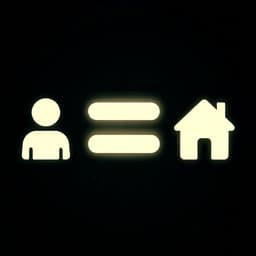My phone number is...
in SpanishMi número de teléfono es...
/mee NOO-meh-roh deh teh-LEH-foh-noh ehs/
This is the most complete and universally understood way to state your phone number. It's clear, direct, and works in any situation, from formal to casual.

Ready to connect? Use 'Mi número es...' to share your phone number and make new friends.
💬Other Ways to Say It
Mi número es...
/mee NOO-meh-roh ehs/
A shorter, more common version used when the context makes it obvious you're talking about a phone number. This is what you'll hear most often in everyday conversation.
Mi celular es...
/mee seh-loo-LAHR ehs/
In Latin America, 'celular' is the standard word for a mobile phone. This phrase specifies that you're giving your mobile number, not a landline.
Mi móvil es...
/mee MOH-beel ehs/
This is the direct equivalent of 'My cell is...' but is used almost exclusively in Spain. 'Móvil' is the standard term for a mobile phone there.
Te doy mi número.
/teh doy mee NOO-meh-roh/
Meaning 'I'll give you my number,' this is a friendly, proactive way to offer your number. It's slightly more engaging than just stating it.
Apunta mi número...
/ah-POON-tah mee NOO-meh-roh/
This literally means 'Write down my number...' It's a direct and helpful instruction that's very common and sounds natural.
Le doy mi número.
/leh doy mee NOO-meh-roh/
The formal version of 'Te doy mi número.' Using 'le' shows respect and corresponds to addressing someone as 'usted.'
Mi WhatsApp es...
/mee gwhats-APP ehs/
In the modern Spanish-speaking world, exchanging numbers is often synonymous with connecting on WhatsApp. This phrase cuts straight to the point.
🔑Key Words
Key Words to learn:
📊Quick Comparison
Here’s a quick comparison of the most common ways to give your phone number, so you can pick the perfect one for any situation.
| Phrase | Formality | Best For | Avoid When |
|---|---|---|---|
| Mi número de teléfono es... | Neutral | Any situation, especially when you need to be very clear and specific (e.g., on a form). | It can sound a bit long in very casual, fast-paced conversations. |
| Mi número es... | Casual | Everyday, informal chats where it's already clear you're talking about phones. | In a very formal setting where being explicit with 'de teléfono' might feel more proper. |
| Mi celular es... | Neutral | Giving your mobile number anywhere in Latin America. | When you are in Spain; they use 'móvil'. |
| Mi móvil es... | Neutral | Giving your mobile number specifically in Spain. | When you are in Latin America; they use 'celular'. |
📈Difficulty Level
The individual words are easy, but reciting a long string of Spanish numbers clearly can be tricky for beginners. Practice your numbers 0-9!
The grammar is as simple as it gets: 'My [noun] is [number]'. It follows the same structure as English.
The main complexity is cultural: knowing whether to use 'celular' (Latin America) or 'móvil' (Spain). Understanding number grouping also adds a layer of nuance.
Key Challenges:
- Remembering the regional words for 'cell phone' (celular/móvil).
- Saying a string of numbers quickly and correctly under pressure.
- Understanding the numbers when a native speaker says them quickly.
💡Examples in Action
—¿Me puedes dar tu contacto? —Claro, mi número es el seis, uno, siete, cinco, cinco, cinco, uno, dos, tres, cuatro.
—Can you give me your contact info? —Of course, my number is 617-555-1234.
Si necesita contactarme, le doy mi número de móvil. Es el 600 123 456.
If you need to contact me, I'll give you my mobile number. It's 600 123 456.
¡Agreguémonos a WhatsApp! ¿Cuál es tu celular? —¡Dale! Mi celular es 11 9876 5432.
Let's add each other on WhatsApp! What's your cell? —Let's do it! My cell is 11 9876 5432.
Para confirmar la cita, mi número de teléfono es 55 1234 5678.
To confirm the appointment, my phone number is 55 1234 5678.
🌍Cultural Context
The Great Divide: 'Celular' vs. 'Móvil'
This is one of the clearest vocabulary differences in the Spanish-speaking world. In Spain, you have a 'móvil.' Pretty much everywhere in Latin America, from Mexico to Chile, you have a 'celular.' Using the right word is a quick way to sound more like a local.
How Numbers Are Grouped
Unlike the standard 3-3-4 grouping in the U.S., how phone numbers are spoken in Spanish varies. In Spain, mobile numbers are often grouped in threes (e.g., 612 345 678). In Mexico, it's common to group them in pairs (55 12 34 56 78). When in doubt, just say them slowly one by one.
WhatsApp is King
In many Spanish-speaking countries, asking for someone's number is really asking for their WhatsApp. It's the default communication app for personal and even many business interactions. Don't be surprised if someone says '¿Tienes WhatsApp?' instead of asking for your number directly.
Adding the Country Code
When exchanging numbers with someone from another country, remember the country code ('código del país'). For example, you would add +34 for Spain, +52 for Mexico, or +54 for Argentina before the number to call or message internationally.
❌ Common Pitfalls
Using 'Soy' (I am) instead of 'Es' (It is)
Mistake: "Mi número soy 123..."
Correction: Mi número es 123...
Mixing up 'Celular' and 'Móvil'
Mistake: "Saying 'Mi celular es...' while in Madrid."
Correction: Mi móvil es...
Forgetting the 'de'
Mistake: "Mi número teléfono es..."
Correction: Mi número de teléfono es...
Pronouncing Numbers in English
Mistake: "Saying 'five, five, five' with English pronunciation."
Correction: cinco, cinco, cinco (SEEN-koh, SEEN-koh, SEEN-koh)
💡Pro Tips
Speak Slowly and Clearly
When you're giving your number, don't rush! Say the digits slowly and clearly, maybe pausing between groups of two or three numbers. This gives the other person time to type or write it down without having to ask you to repeat yourself.
Confirm Their Number
After someone gives you their number, a great habit is to repeat it back to them for confirmation. You can say, 'A ver, entonces es...' ('Let's see, so it's...'). This prevents mistakes and shows you were listening carefully.
Send a Quick 'Hola'
A very common practice after exchanging numbers is for one person to immediately send a WhatsApp message like 'Hola, soy [Your Name]' ('Hi, it's [Your Name]'). This way, you both have each other's number saved correctly right away.
Use 'el' for Clarity
You will often hear people say 'Mi número es el...' before stating the number. Adding 'el' (the) is very common and can make the phrase flow a bit more smoothly, but it's completely optional.
🗺️Regional Variations
Spain
Mobile numbers in Spain almost always start with a 6 or 7 and are nine digits long. They are commonly recited in three groups of three, for example: 'seis uno dos, tres cuatro cinco, seis siete ocho'.
Mexico
Mobile numbers have 10 digits. They are often recited in pairs, for example: 'cincuenta y cinco, doce, treinta y cuatro, cincuenta y seis, setenta y ocho' (55 12 34 56 78).
Argentina
It's common to state the area code separately from the number. Historically, mobile numbers started with '15', and you might still hear people say 'quince' before the rest of the number, though this is becoming less common.
Caribbean (e.g., Puerto Rico, Dominican Republic)
Numbers are often given digit by digit in a quick, rhythmic way. The context is usually very informal and direct.
💬What Comes Next?
After you give your number, they might save it and confirm.
Listo, ya te agendé.
Done, I've saved you in my contacts.
Perfecto, gracias.
Perfect, thanks.
To make sure you have their number too.
Te mando un WhatsApp para que tengas mi número.
I'll send you a WhatsApp so you have my number.
¡Genial! Así lo guardo.
Great! That way I'll save it.
You've asked for their number and they've given it to you.
Es el 123 456 789.
It's 123 456 789.
Vale, apuntado. Gracias.
Okay, noted. Thanks.
🧠Memory Tricks
The slightly silly sound association between 'número es' and 'new mayor, eh?' can help lodge the core phrase in your memory.
🔄How It Differs from English
The most significant difference from English is the vocabulary for 'cell phone,' which splits the Spanish-speaking world into 'móvil' (Spain) and 'celular' (Latin America). Additionally, the way numbers are rhythmically grouped and spoken varies by region, unlike the fairly standard XXX-XXX-XXXX format familiar to Americans.
🎯Your Learning Path
➡️ Learn Next:
How to ask for someone's phone number
It's the natural other half of the conversation. You need to know how to ask for a number, not just give yours.
How to count from 0 to 10 in Spanish
You can't say your phone number if you don't know the basic digits!
How to say 'call me' in Spanish
This is a common follow-up after giving your number, telling the person what to do with it.
How to say 'What is your name?' in Spanish
Exchanging names and numbers are foundational steps in getting to know someone.
✏️Test Your Knowledge
💡 Quick Quiz: My phone number is...
Question 1 of 3
You're making a new friend in Barcelona and want to give them your number. What's the most natural thing to say?
Frequently Asked Questions
Do I need to say 'de teléfono' every time?
No, not at all! In fact, 'Mi número es...' is more common in casual conversation. The full phrase 'Mi número de teléfono es...' is great for clarity or more formal settings, but dropping 'de teléfono' is perfectly natural when the context is clear.
What's the difference between 'teléfono', 'celular', and 'móvil'?
'Teléfono' is a general term for any phone, including a landline. 'Celular' is the word for a mobile/cell phone in Latin America. 'Móvil' is the word for a mobile/cell phone in Spain. Using the correct regional term will make you sound much more natural.
How do I say the number zero in Spanish?
The correct word for zero is 'cero' (pronounced /SEH-roh/). While you might occasionally hear native speakers say 'o' like in English, especially if they speak English, using 'cero' is always the clearest and most correct way.
Is it okay to just show someone my number on my phone?
Absolutely! If you're struggling with the numbers or in a noisy place, simply showing your number on your phone is very common. You can say 'Aquí tienes' ('Here you go') as you show them.
How do I give my number formally to someone I should use 'usted' with?
The phrase 'Mi número de teléfono es...' is perfectly neutral and works for both formal ('usted') and informal ('tú') situations. If you want to actively offer it, use the formal construction 'Le doy mi número' ('I'll give you (formal) my number').
What's the best way to practice saying my phone number?
Practice saying your own phone number out loud until it feels smooth. First, say each digit one by one. Then, try grouping them in pairs or threes like a native speaker might. Repetition is key to making it sound natural when you're put on the spot!
📚Continue Learning Spanish Phrases
Explore More Phrases in These Categories
Find similar phrases to expand your Spanish vocabulary:
Want to Learn More Spanish Phrases?
Browse our complete collection of Spanish phrases organized by situation, from basic greetings to advanced conversations. Perfect for travelers, students, and anyone learning Spanish.
View All Spanish Phrases →



